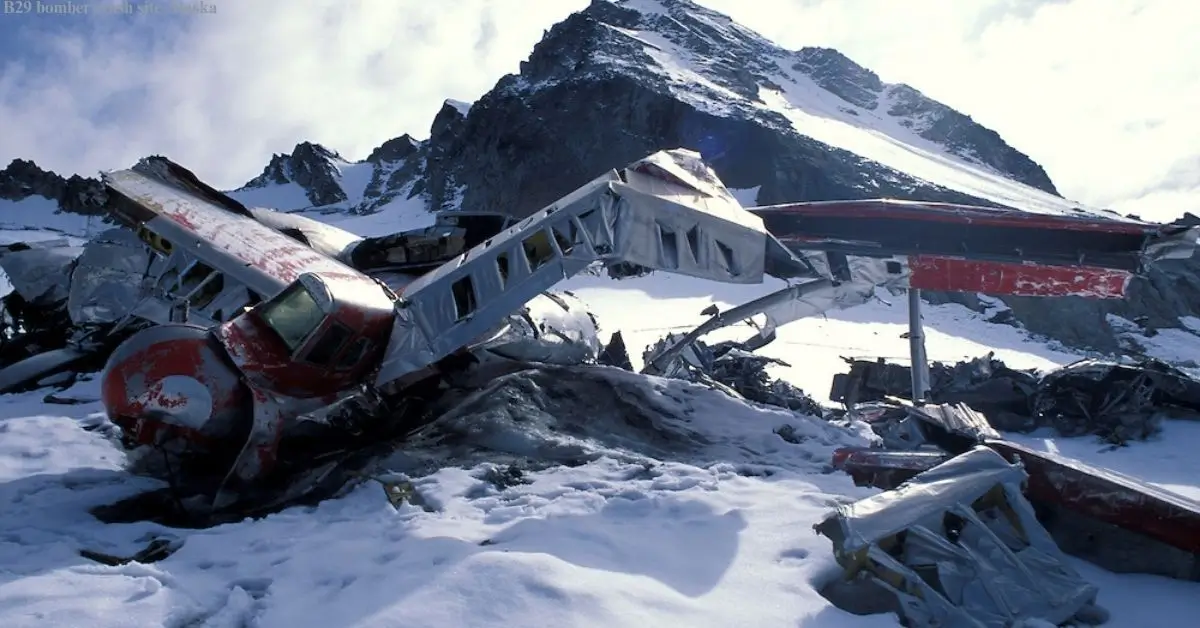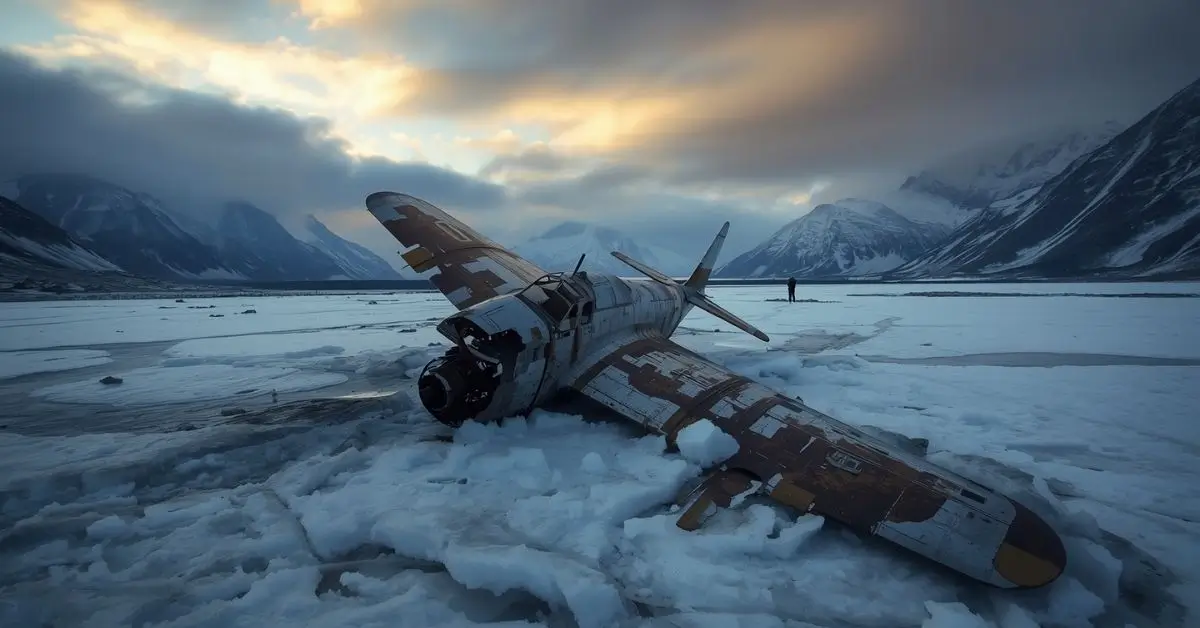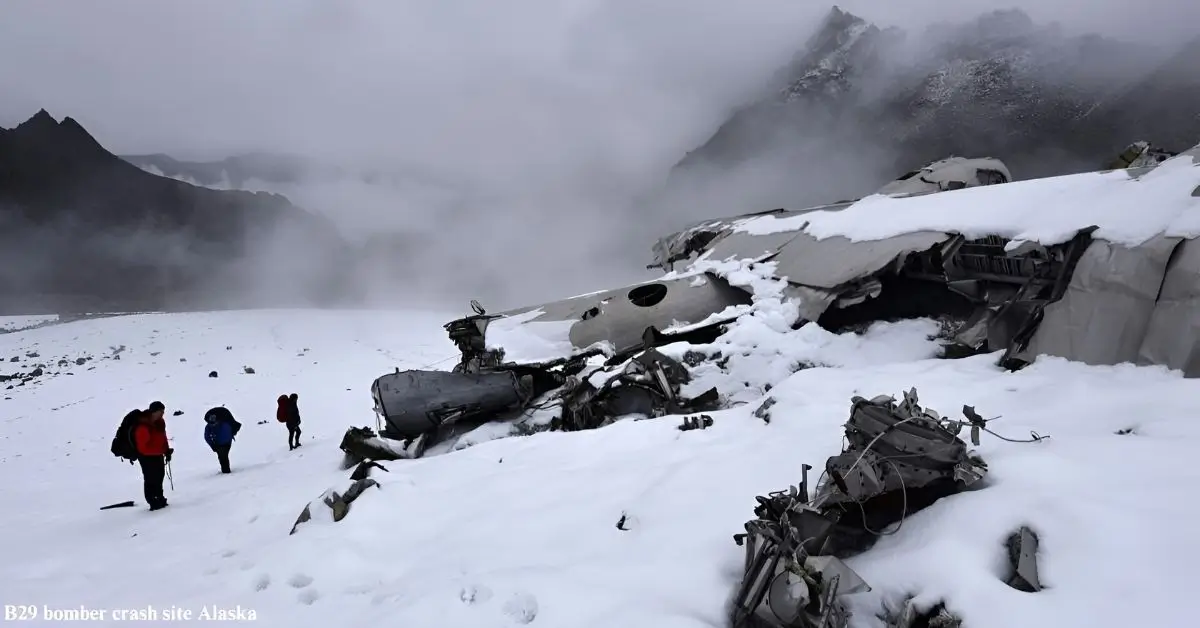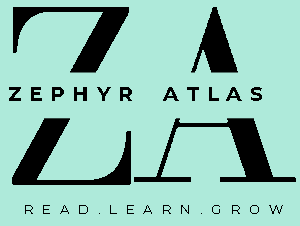Key Intake
Q1: Where is the B29 bomber crash site Alaska?
On Bomber Glacier, Talkeetna Mountains, ~39 miles southeast of Talkeetna, coordinates 61.85083333°N, 149.13388889°W.
Q2: Are there other military crash sites in Alaska accessible to hikers?
Yes, including KB-29P Bald Mountain crash (1956), though Bomber Glacier is most preserved and accessible.
Q3: When did the TB-29 crash at Bomber Glacier occur?
November 15, 1957, during a routine radar calibration mission.
Q4: Are guided tours allowed to the bomber wreck?
Yes, local outfitters offer guided hikes. Unguided travel requires glacier experience
Q5: What remains of the B-29 at the glacier today?
Main fuselage, wings, engines, landing gear, nose section, and scattered debris preserved on ice.
Table of Contents
Quick Answer
The B29 crash site at Bomber Glacier in Alaska is located at approximately 61.7°N, 149.3°W, 39 miles southeast of Talkeetna.
The TB-29 Superfortress crashed during a 1957 radar training mission; the wreckage remains accessible via a strenuous 12-mile hike with glacier navigation.
Unlock More Insights
Introduction
Ever wonder what lies frozen in the Talkeetna Mountains of Alaska? The B29 bomber crash site alaska at Bomber Glacier preserves history in ice. On November 15, 1957, a TB-29 Superfortress training flight went off course and crashed at 5,600 feet, killing 6 of 10 crew members. Staff Sergeant Calvin K. Campbell’s heroic rescue saved four lives (Soldier’s Medal recipient). [Alaska State Parks] documents confirm the wreckage remains largely intact and increasingly exposed due to glacier retreat.
→If you are fan of Outdoor Boys Yt channel and are interested in this story than you should watch:
→I Found a Wrecked B-29 Bomber while Solo Camping, Hiking & Exploring an Abandoned Gold Mine
What Happened During the 1957 B-29 Crash?

Here is a complete detailed and easy to read summary of the incident:
| Category | Details |
|---|---|
| Date & Time | November 15, 1957 – 18:22 Local Time |
| Aircraft Type | Boeing TB-29 Superfortress (Trainer Conversion) |
| Aircraft Serial / Registration | 44-70039 |
| Manufacturer Serial Number (MSN) | 10871 |
| Year of Manufacture (YOM) | 1944 |
| Operator / Unit | United States Air Force 5040th Radar Evaluation Squadron (RESqn), Elmendorf Air Force Base, Alaska |
| Flight Type | Military Radar Calibration Training Mission |
| Flight Phase | En Route |
| Planned Route | Elmendorf Air Force Base (Departure and Destination) |
| Mission Duration (Planned) | Approximately 10 hours |
| Location of Crash | Unnamed glacier near Hatcher Pass, Susitna Valley, approximately 39 miles southeast of Talkeetna, Alaska |
| Region / Country | Talkeetna Mountains, Alaska – United States of America (North America) |
| Site Environment | Remote mountainous terrain, glacial area |
| Altitude at Impact | Approximately 5,600 feet (1,707 meters) |
| Weather Conditions | Poor visibility with low clouds and deteriorating weather conditions |
| Occupants (Total) | 10 (All crew, no passengers) |
| Fatalities | 6 crew members killed |
| Survivors | 4 crew members survived |
| Civilian Fatalities | None |
| Aircraft Damage | Destroyed on impact |
| Cause (Probable) | Aircraft deviated roughly 27 miles east of planned flight path due to a combination of poor weather visibility and pilot navigation error. The bomber struck mountainous terrain during descent through clouds. |
| Crash Circumstances | The TB-29 was on a radar calibration training mission from Elmendorf AFB. Due to severe weather and disorientation, the aircraft strayed off course into the Talkeetna Mountains. It impacted the glacier face at 5,600 feet, breaking apart on impact. |
| Heroic Actions | Despite his injuries, Staff Sergeant Calvin K. Campbell rescued fellow survivors Robert J. McMurray, Manuel Garza, and Claire W. Johnsondragging them to safety, wrapping them in parachutes and sleeping bags to prevent hypothermia. His valor earned him the Soldier’s Medal, the U.S. Army’s highest non-combat award for heroism. |
| Casualties (Detailed) | Killed in Action: Major Robert A. Butler, Captain Richard O. Seaman– Captain Erwin Stolfich, Captain Edward A. Valiant, 1st Lieutenant William J. Schreffler Airman Basic James R. RobersonSurvivors: Staff Sergeant Calvin K. Campbell– Staff Sergeant Robert J. McMurray, Technical Sergeant Manuel Garza, 1st Lieutenant Claire W. Johnson |
| Rescue Operation | The wreckage was first located by Lt. Jack A. Wolf piloting a Grumman SA-16 Albatross amphibian. Rescue helicopters—Piasecki SH-21 Workhorses—flown by Capt. Melvin Swendels and 1st Lt. Thomas Seebo of the 10th Air Rescue Group—airlifted the four survivors from the glacier. |
| Memorial Significance | The site, now known as Bomber Glacier, remains a preserved Cold War-era crash landmark accessible via hiking trails from Reed Lakes and Hatcher Pass. It serves as both a tribute to the fallen airmen and a popular historic hiking destination in Alaska. |
| References & Acknowledgments | Compiled from archival records of the Bureau of Aircraft Accidents Archives (BAAA), National Park Service, ExploreNorth, Alaska.org, and eyewitness research from aviation historians such as Adam Elliott. |
Where is the B29 Bomber Crash Site Alaska?
The B29 bomber crash site alaska rests on Bomber Glacier in the Talkeetna Mountains, elevation 5,300-5,600 feet, northeast of Hatcher Pass.
- Coordinates & access: 61.85083333°N, 149.13388889°W, via Reed Lakes Trail, Alaska State Parks permit required.
- Terrain: Steep alpine passes, glacier descent, and natural bowl formation with jagged peaks.
- Jurisdiction: Military property under federal protection; hiking permitted with trail pass.
Think of it like entering a frozen museum: the glacier preserves both wreckage and the story of Cold War aviation.
Aircraft Specifications: Boeing TB-29 Superfortress (Serial 44-70039)

| Specification Category | Details |
|---|---|
| Aircraft Type | Boeing TB-29 Superfortress (Trainer/Calibration Variant of the B-29) |
| Manufacturer | Boeing Aircraft Company, Wichita, Kansas, USA |
| Model Designation | TB-29, Modified version of the B-29 Superfortress for radar training and calibration missions |
| Manufacturer Serial Number (MSN) | 10871 |
| USAF Serial Number | 44-70039 |
| Production Year (YOM) | 1944 |
| Operator / Unit | 5040th Radar Evaluation Squadron, United States Air Force (Elmendorf Air Force Base, Alaska) |
| Primary Mission Role | Radar calibration, crew training, and long-range navigation accuracy testing |
| Secondary Role | Post-war electronic countermeasures (ECM) and arctic flight operations |
| Crew Capacity | 10 (standard for TB-29 variant; includes radar operators and calibration technicians) |
| Powerplant | 4 × Wright R-3350-23 Duplex-Cyclone radial piston engines |
| Horsepower (each engine) | Approximately 2,200 hp |
| Propeller Type | Four-bladed constant-speed Hamilton Standard propellers |
| Wingspan | 141 feet 3 inches (43.05 meters) |
| Length | 99 feet 0 inches (30.18 meters) |
| Height | 27 feet 9 inches (8.46 meters) |
| Wing Area | 1,736 square feet (161.27 square meters) |
| Empty Weight | Approximately 74,500 lb (33,793 kg) |
| Maximum Takeoff Weight (MTOW) | 140,000 lb (63,503 kg) |
| Cruising Speed | 220 mph (354 km/h) |
| Maximum Speed | 357 mph (575 km/h) at 30,000 ft |
| Service Ceiling | 31,850 ft (9,710 m) |
| Range | Approximately 3,250 miles (5,230 km) |
| Fuel Capacity | 9,548 U.S. gallons (36,140 liters) across multiple self-sealing tanks |
| Armament (Standard B-29 Configuration) | 12 × .50 caliber M2 Browning machine guns (automated remote-controlled turrets) and 1 × 20 mm cannon in tail; Note: TB-29 versions had most armament removed for radar/electronic modifications |
| Avionics Suite (TB-29 Variant) | Equipped with AN/APQ-13 radar system, calibration antennas, and Cold War electronic test instruments |
| Distinctive Modifications | – Removal of standard bombing equipment– Installation of radar test consoles– Reinforced fuselage sections for cold-weather operations– Extended nose radome housing instrumentation gear. (asn.flightsafety.org) |
| Operational Range (Radar Missions) | Typically flown between 5,000–10,000 ft for low-altitude calibration runs and up to 30,000 ft for long-range radar testing |
| Notable Use Cases | Used extensively by the USAF during early Cold War years to test radar accuracy over Arctic regions and northern defense networks (Distant Early Warning Line) |
| Decommissioning Status | Majority of TB-29 fleet retired by early 1960s; aircraft 44-70039 was destroyed in crash on November 15, 1957 near Talkeetna, Alaska |
How Do You Hike to the Bomber Glacier Wreck?
Accessing the B-29 crash site requires a 12-mile round-trip trek with 3,500 ft elevation gain via Reed Lakes Trail, including glacier navigation.
- Route summary: Trailhead → Lower Reed Lake → Upper Reed Lake → Bomber Pass → Glacier descent → wreckage.
- Season: Late July early September optimal; summer melt exposes more wreckage.
- Essential gear:
- Boots, microspikes/crampons, ice axe
- GPS + maps, headlamp, emergency bivy
- Warm layers, water, bear spray
- Boots, microspikes/crampons, ice axe
Tip: Guided tours reduce risk of crevasses and sudden weather hazards. Unguided attempts require advanced glacier travel experience.
→Interested in some expert hikers insights and experience then watch:
→Solo Hike to an Abandoned B-29 Bomber Plane in Alaska
What Remains at the Bomber Glacier Crash Site Today?

Snippet: The crash site contains the main fuselage, wings, four engines, landing gear, and nose section, preserved for over six decades by glacier ice.
- Fuselage: “U.S. AIR FORCE” markings visible, partially submerged in ice.
- Debris field: Scattered across ~500 yards; glacier movement slowly redistributes parts.
- Artifacts: Parachute fragments, personal effects occasionally exposed.
Truth is, the glacier acts as a natural archivist, slowly revealing history each melt season.
Who Were the Crew Members?
Snippet: Six crew members died, including Major Robert A. Butler, while four survived, thanks to Staff Sergeant Calvin K. Campbell’s heroic actions.
- Survivors: Campbell, McMurray, Garza, and Johnson.
- Heroism: Campbell wrapped injured comrades in parachutes and sleeping bags, sheltered them overnight, and prevented further fatalities.
- Memorials: Plaques at crash site and Alaska Veterans Memorial honor the fallen.
Based on real-world accounts, this site remains one of the most preserved Cold War-era military crash memorials.
Is It Safe to Visit the Bomber Glacier Wreckage?

Visiting Bomber Glacier involves hidden crevasses, unstable ice, altitude, wildlife, and sudden weather hazards.
- Mitigation: Travel in groups, use satellite PLBs, carry glacier equipment, hire guides if inexperienced.
- Recent incidents: Multiple rescues by Alaska State Troopers 2020–2024.
- Legal note: Removal of wreckage or artifacts is federal crime; photography encouraged.
Guided vs Unguided Comparison Table
| Aspect | Guided | Unguided |
| Safety | Professional assessment | Personal responsibility |
| Cost | $500–800 | Trail pass only |
| Education | Historical & natural context | Self-research |
| Access | Flexible season | Only optimal months |
What Was the Mission of the Crashed B-29?
The TB-29 was on a radar calibration mission for the 5040th Radar Evaluation Squadron to test DEW Line detection during the Cold War.
- Strategic context: Alaska frontline for North American air defense; Soviet bomber detection crucial.
- Flight specifics: 10-hour route to calibrate multiple radar stations simulating enemy incursions.
- Impact: Loss affected Cold War preparedness temporarily but highlighted extreme conditions of Arctic aviation.
How Has Climate Change Affected the Site?
- Glacier retreat exposes more wreckage each season.
- Meltwater channels and crevasses increase risk for hikers.
- Preservation vs. exposure paradox: more artifacts visible but ice stability reduced.
Sources
- National Park Service: Cold War in Alaska: A historical overview of military installations and their legacy.
- Bureau of Aircraft Accidents Archives: Crash report of the Boeing TB-29 Superfortress near Talkeetna (1957). (View Source)
- ExploreNorth: Detailed reconstruction of the TB-29 Superfortress #44-70039 incident.
- Alaska.org: Hiking Bomber Glacier: A guide to exploring the historic wreck in Hatcher Pass. (View Source)
- The New York Times: Crash of B-29 kills six airmen in Alaska (1957).
Final Verdict
The B29 bomber crash site Alaska stands frozen in time, a stark reminder of courage, error, and endurance. What began as a 1957 radar-training mission ended in tragedy, yet its remains have transformed into one of Alaska’s most hauntingly beautiful historic landmarks. Each summer, the glacier reveals more of the aircraft, bridging military history and outdoor exploration in one surreal tableau.
For aviation historians, it’s a tangible link to Cold War skies. For hikers and photographers, it’s an adventure steeped in reverence. And for Alaska itself, it’s an evolving monument where ice, memory, and heroism converge. Visiting the wreck is more than a hike; it’s an encounter with living history, a story still whispering across the snowfields of Bomber Glacier.
Author Bio
Randall E. Thornton is an Aviation Historian & Wilderness Guide with an experience of 12 yearsdocumenting military aviation history and guiding glacier treks in Alaska.
Randall combines historical research with real-world glacier exploration to deliver authoritative, actionable insights.












